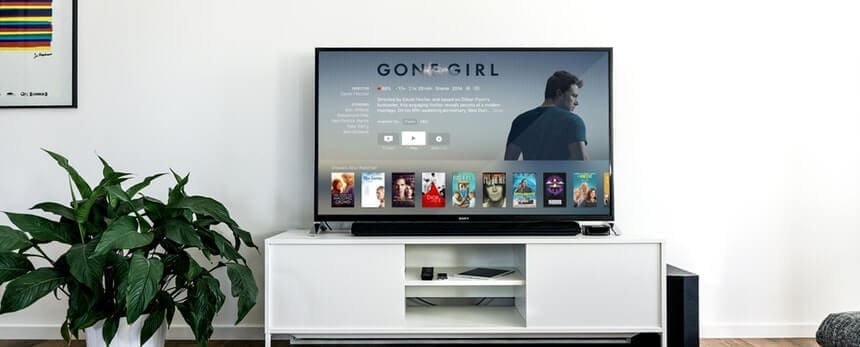
Maximize your local presence through strategic location management.

ITV recently said that it plans to launch addressable TV within the next 12 months, enabling smaller and local businesses to target ads on a household-by-household basis. Its intention is to persuade smaller advertisers to divert some (or all) of their Facebook and Google ad budget to TV, with the promise of delivering more highly targeted and personalised advertising, which it says is data-driven, more accountable and measurable.
What is addressable TV?
The addressable TV ad opportunity is still being defined but it generally refers to ads being targeted at specific household audiences watching linear television. Based on census data primarily, it allows for targeting based on income, ethnicity, children, home ownership and even car leases. The advertiser defines the audience it wants to target and pays for impressions irrespective of what that audience is watching at the time.
How TV broadcasters are able to deliver such advertising is still being experimented with, and the upcoming General Data Protection Regulation (GDPR) which comes into force next May is likely to add a new layer of complexity as IP address and postcode are generally used. In order to reach linear TV viewers, ITV for example is going to need to know who is watching what in real-time. This sort of information can really only be accessed from a set-top box, and ITV has said it will use an “amalgamation of different systems” including the “set-top box manufacturers, the TV manufacturers, the delivery systems that provide data plays for us”. In the US, addressable TV tends to use a combination of first-, second- and third-party data.
How popular is addressable TV advertising?
Last year, addressable TV reached 42% of US households (approximately 49.8 million households), representing nearly $900 million in advertising spend, according to the Video Advertising Bureau. It’s on track to reach $2.2 billion in 2018, and its household penetration is predicted to rise to 74% of TV homes by 2020. However despite the impressive numbers, these are still quite modest figures compared with the $71.29 billion that was spent on TV advertising in the US last year.
Within the UK, addressable TV advertising is not quite so mature. An eMarketer study last October that found only 4.1% of marketers in the UK either ‘evaluated’ or ‘initiated’ addressable TV to improve ‘data-driven’ advertising. However, as traditional TV moves to on-demand connected TV and connected TV expands from primarily subscription to primarily ad-funded, it seems very likely to grow in popularity.
The main challenge addressable TV will face is declining TV subscribers. Largely due to the improved selection of streaming services by Netflix and Amazon, for example, more and more customers are cutting the cord. In 2015, 385,000 US customers decided to cancel their standard TV packages, and this figure is growing.
What are the main benefits for local advertisers?
TV advertising, on the whole, has only been an option for big brands. However addressable TV cuts the wastage out of TV advertising for local advertisers particularly, who only want to reach a highly segmented audience. Also with fewer advertising dollars chasing the same ad inventory in TV, this could lead to more competitive prices within addressable TV, making it much more accessible to smaller businesses. Media companies with large addressable footprints can also provide their advertisers with more value through better planning and audience discovery, as well as TV execution and measurement.
Subscribe to our monthly newsletter.
Over the past couple of years there has been growing concern about the efficacy and deliverability of online advertising, caused by bots, ad blocking and viewability issues. According to research commissioned by the Association of National Advertisers (ANA), advertisers lost $7.2bn to bot fraud last year. The volume of online ads that are viewable and delivered to human traffic is currently a point of contention. Deputy managing director for ITV’s commercial division Simon Dalglish, recently made the point that “a view on YouTube is 50% of the pixels for two seconds. You have just done an expensive, massive film and someone’s only seen the top right part of someone’s hand. Sometimes we’re using language which doesn’t describe what’s happening. We’re using words like ‘view’ when it’s not a view, it’s a glimpse. I think we need to be more honest with ourselves.”
Could it feasibly give Google and Facebook a run for their money?
Google has really upped its game in local search over the past couple of years, with Facebook following its lead. If local advertisers have just begun to properly get to grips with Google My Business, for example, and the myriad features available…will they feasibly divert some of their digital ad budget and resource to experimenting with addressable TV?
Furthermore, we are now living in a mobile-first world, and linear TV hardly offers that personal device element. There may be several different ages and generations living in one house and watching the same TV at different times of day, and targeting the right individual at the right time with the best creative has a significant margin of error. There’s also no guarantee that the target individual will be sitting on the sofa with their attention fully on the TV when the ad airs…they might be in the kitchen making a cup of tea!
There’s little doubt that TV (both linear and on-demand) holds a reputation for quality and transparency that advertisers are attracted to, which digital advertising is lacking in at present. Addressable TV is an intriguing alternative, but it remains to be seen whether it will really take off on a scale that will have any sort of impact on Google or Facebook.
Maximize your local presence through strategic location management.
Maximize your local presence through strategic location management.
Subscribe to our monthly newsletter.